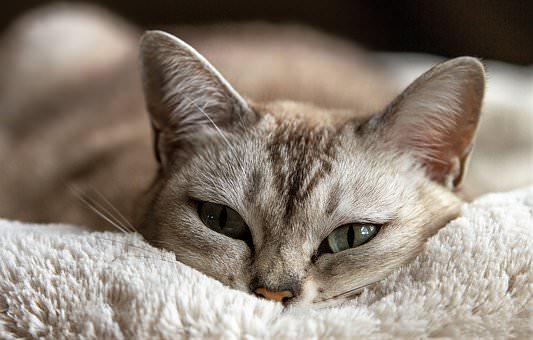All cats get sick sometime. Most cats will require some sort of anesthesia at some point. Whether it is to be spayed or neutered or it is to remove something stuck in the bowel, anesthesia is a part of the lives of most living things in this day and age. As a society, we are very lucky that anesthesia exists. Otherwise, many of us would not even be here to read this.
Anesthesia is defined medically as a temporary loss of feeling or awareness. In medicine, we use drugs to cause loss of consciousness for the purpose of performing procedures. Over time, the safety and effectiveness of anesthesia has gotten better and better. Before 1846, the prospect of surgery was a haunting one. The discovery that the gas ether (when dosed appropriately) could be safely used for safe and effective anesthesia was a game changer for the world of medicine. Anesthetic options have increased since that time and today, we have a variety of options that we can tailor to the individual’s needs and the procedure. Most (if not all) of the anesthetic drugs used in human medicine are available for use in veterinary medicine and protocols can be surprisingly similar with some species specific exceptions.
Bad news always travels fast and if and when there is an anesthetic mishap, it seems to make headlines. Everyone seems to know someone who tells a tale of losing a pet under anesthesia, but a recent study among human beings anesthetized over a period of 8 years in a Brazilian hospital revealed that although some patients died during surgery (16 deaths in 10,000), they were all related to patient factors, like preexisting disease1. None of the deaths were related to actual anesthesia, so the likelihood that your normal healthy cat would not recover from anesthesia is very slim. An older study suggests that anesthetic death among cats is rare, but not as rare as that reported for humans or dogs.2
The same study found that the risk of anesthetic death was further reduced by the careful monitoring of pulse and oxygen saturation of the blood with a pulse oximeter. With that being said, you should make sure that your veterinarian will be attending the anesthetic induction and that you feel comfortable with his/her competence to choose and safely administer the drugs.
Talk with your veterinarian. Let the veterinary team help you weigh the risks versus the benefits. Ask about their ability to monitor during anesthesia and if they feel that your cat is a high risk patient. If your cat needs to have a procedure under anesthesia to address pain (like dental disease) or potentially save or improve her life, you should not let fear stop you from providing the care that she needs.
Do you love cats? Want to learn more? Follow me on Facebook by clicking here
- Pignaton, Wangles et al. “Perioperative and Anesthesia-Related Mortality: An 8-Year Observational Survey From a Tertiary Teaching Hospital.” Ed. Pasquale De Negri.Medicine 2 (2016): e2208. PMC. Web. 4 Feb. 2017.
- Brodbelt D.Feline anesthetic deaths in veterinary practice. Top Companion Anim Med. 2010 Nov;25(4):189-94. doi: 10.1053/j.tcam.2010.09.007. Review. PubMed PMID: 21147471.
Featured Image Credit: Captain Pancakes via Flickr
